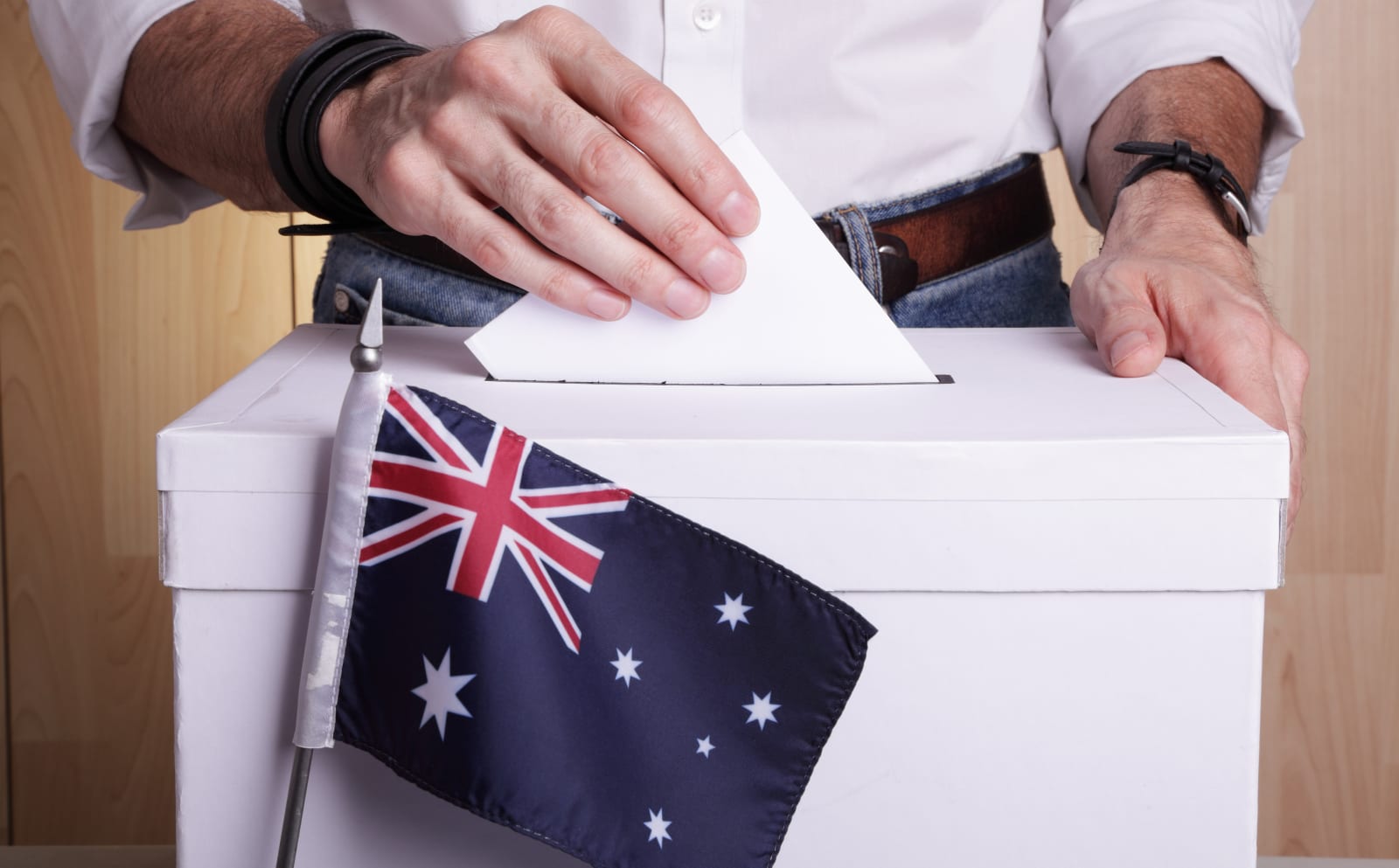Posts Tagged: against
The DOJ is reportedly prepared to file a broad antitrust lawsuit against Apple
The US Department of Justice (DOJ) could file “a sweeping antitrust case” against Apple as soon as the first half of this year, according to The New York Times. The report says the agency is in “the late stages” of its investigation, focusing on the company’s control over hardware and software services and how its “walled garden” approach has allegedly made it harder for rivals to compete and customers to switch to competing products.
The New York Times report says the investigation has expanded beyond what was previously reported, according to people with knowledge of the meetings. Among other areas, its scope has allegedly covered how the Apple Watch is more tightly integrated with iPhone services than rival wearables and how it locks competing platforms out of iMessage.
Executives from Beeper, which got into a public spat with Apple late last year over the iPhone maker’s blocking of the app’s iMessage integration on Android, reportedly talked with investigators. In addition, Tile, which has made Bluetooth trackers since long before the AirTag existed, allegedly sat down with the DOJ, too. The agency is said to have “had conversations with” representatives from banking and payment apps about Apple’s practice of blocking rivals from using tap-to-pay on the iPhone.
Meta also reportedly talked with investigators. The social company allegedly “encouraged” the DOJ to look into Apple’s App Tracking Transparency (ATT) privacy tool in its meetings. ATT, launched in 2021, lets users hinder advertisers’ data collection, a feature Meta said in 2022 could cost it $ 10 billion that year. The NYT claims investigators have also looked into Apple’s cut of digital purchases made on the iPhone, a point Spotify, Epic Games and dating corporation Match Group have been vocal about in recent years.
The federal government currently has its hands full with Big Tech antitrust cases. The DOJ is pursuing two antitrust cases against Google (one for search and another for advertising), while the FTC has sued Meta and Amazon.
This article originally appeared on Engadget at https://www.engadget.com/the-doj-is-reportedly-prepared-to-file-a-broad-antitrust-lawsuit-against-apple-213030784.html?src=rss
Engadget is a web magazine with obsessive daily coverage of everything new in gadgets and consumer electronics
Google loses landmark antitrust lawsuit against Epic Games
Google has lost a landmark case against Epic Games after a jury decided on Monday that the web giant operates an illegal monopoly via its Android app store.
Digital Trends
Apple reaches $25M settlement with the DOJ for discriminating against US residents during hiring
Apple will pay $ 25 million in backpay and civil penalties to settle allegations that it favored visa holders and discriminated against US citizens and permanent residents during its hiring process, the Department of Justice said in a statement on Thursday. This is the largest amount that the DOJ has collected under the anti-discrimination provision of the Immigration and Nationality Act.
At the heart of the issue is a federal program administered by the Department of Labor and the Department of Homeland Security called the Permanent Labor Certification Program (PERM). PERM allows US employers to file for foreign workers on visas to become permanent US residents. As part of the PERM process, employers are required to prominently advertise open positions so that anyone can apply to them regardless of citizenship status.
The DOJ said that Apple violated these rules by not advertising PERM positions on their recruiting website, and also made it harder for people to apply by requiring mailed-in paper applications, something that it did not do for regular, non-PERM positions. As a result, a DOJ investigation found that Apple received few or no applications for these positions from US citizens or permanent residents who do not require work visas.
As part of the settlement, Apple will pay $ 6.75 million in civil penalties and set up a $ 18.25 million fund to pay back eligible discrimination victims, the DOJ’s statement said.
Apple disagreed with the DOJ’s characterization. “Apple proudly employs more than 90,000 people in the United States and continues to invest nationwide, creating millions of jobs,” a company spokesperson told CNBC. “When we realized we had unintentionally not been following the DOJ standard, we agreed to a settlement addressing their concerns. We have implemented a robust remediation plan to comply with the requirements of various government agencies as we continue to hire American workers and grow in the US”
This article originally appeared on Engadget at https://www.engadget.com/apple-reaches-25m-settlement-with-the-doj-for-discriminating-against-us-residents-during-hiring-225857162.html?src=rss
Engadget is a web magazine with obsessive daily coverage of everything new in gadgets and consumer electronics
Judge tosses Republican lawsuit against Google over Gmail spam filters
Last year, the Republican National Committee (RNC) filed a lawsuit against Google accusing it of political bias over its Gmail spam filters. Now, a federal judge has dismissed that lawsuit, noting that Google was effectively protected by Section 230 of US law, and that the RNC had not "sufficiently pled that Google acted in bad faith" by filtering out campaign emails, The Washington Post has reported.
According to the lawsuit, Google intentionally marked "millions" of RNC emails as spam, so the group sought reimbursement for "donations it allegedly lost as a result" of that. As evidence, it cited a study finding that Gmail was more likely than Yahoo and other mail systems to mark Republican emails as spam. (One of the study's authors told the Post last year that its findings were cherry-picked.)
Calling the lawsuit a "close case," US District Court judge Daniel Calabretta said the RNC had "failed to plausibly allege its claims" that Google's spam filtering was done in bad faith. Google said that the emails in questions were likely flagged as spam because of user complaints, and cited RNC domain authentication issues and frequent mailouts as other potential issues.
The court also decided that RNC emails could be deemed "objectionable" based on the CAN-SPAM Act, and the fact that Google flagged them as such was covered by Section 230, which provides immunity to online platforms from civil liability based on third-party content. All that said, the judge said Republicans could still amend the lawsuit to better establish a lack of good faith by Google.
Interestingly, during last year's mid-term US elections, Google created a loophole allowing political campaigns to dodge Gmail spam filters. However, the RNC reportedly didn't take advantage of the program. Google has since ended the experiment, following largely negative feedback from the public.
This article originally appeared on Engadget at https://www.engadget.com/judge-tosses-republican-lawsuit-against-google-over-gmail-spam-filters-075622648.html?src=rss
Engadget is a web magazine with obsessive daily coverage of everything new in gadgets and consumer electronics
Hitting the Books: In England’s industrial mills, even the clocks worked against you
America didn’t get around to really addressing child labor until the late ’30s when Roosevelts New Deal took hold and the Public Contracts Act raised the minimum age to 16. Before then, kids could often look forward to spending the majorities of their days doing some of the most dangerous and delicate work required on the factory floor. It’s something today’s kids can look forward to as well.
InHands of Time: A Watchmaker’s History, venerated watchmaker Rebecca Struthers explores how the practice and technology of timekeeping has shaped and molded the modern world through her examination of history’s most acclaimed timepieces. In the excerpt below, however, we take a look at 18th- and 19th-century Britain where timekeeping was used as a means of social coercion in keeping both adult and child workers pliant and productive.
Excerpted fromHands of Time: A Watchmaker’s History by Rebecca Struthers. Published by Harper. Copyright © 2023 by Rebecca Struthers. All rights reserved.
Although Puritanism had disappeared from the mainstream in Europe by the time of the Industrial Revolution, industrialists, too, preached redemption through hard work — lest the Devil find work for idle hands to do. Now, though, the goal was productivity as much as redemption, although the two were often conveniently conflated. To those used to working by the clock, the provincial workers’ way of time appeared lazy and disorganized and became increasingly associated with unchristian, slovenly ways. Instead ‘time thrift’ was promoted as a virtue, and even as a source of health. In 1757, the Irish statesman Edmund Burke argued that it was ‘excessive rest and relaxation [that] can be fatal producing melancholy, dejection, despair, and often self-murder’ while hard work was ‘necessary to health of body and mind’.
Historian E.P. Thompson, in his famous essay ‘Time, Work-Discipline and Industrial Capitalism’, poetically described the role of the watch in eighteenth-century Britain as ‘the small instrument which now regulated the rhythms of industrial life’. It’s a description that, as a watchmaker, I particularly enjoy, as I’m often ‘regulating’ the watches I work on — adjusting the active hairspring length to get the watch running at the right rate — so they can regulate us in our daily lives. For the managerial classes, however, their watches dictated not just their own lives but also those of their employees.
In 1850 James Myles, a factory worker from Dundee, wrote a detailed account of his life working in a spinning mill. James had lived in the countryside before relocating to Dundee with his mother and siblings after his father was sentenced to seven years’ transportation to the colonies for murder. James was just seven years old when he managed to get a factory job, a great relief to his mother as the family were already starving. He describes stepping into ‘the dust, the din, the work, the hissing and roaring of one person to another’. At a nearby mill the working day ran for seventeen to nineteen hours and mealtimes were almost dispensed with in order to eke the very most out of their workers’ productivity, ‘Women were employed to boil potatoes and carry them in baskets to the different flats; and the children had to swallow a potato hastily … On dinners cooked and eaten as I have described, they had to subsist till half past nine, and frequently ten at night.’ In order to get workers to the factory on time, foremen sent men round to wake them up. Myles describes how ‘balmy sleep had scarcely closed their urchin eyelids, and steeped their infant souls in blessed forgetfulness, when the thumping of the watchmen’s staff on the door would rouse them from repose, and the words “Get up; it’s four o’clock,” reminded them they were factory children, the unprotected victims of monotonous slavery.’
Human alarm clocks, or ‘knocker-uppers’, became a common sight in industrial cities.* If you weren’t in possession of a clock with an alarm (an expensive complication at the time), you could pay your neighborhood knocker-upper a small fee to tap on your bedroom windows with a long stick, or even a pea shooter, at the agreed time. Knocker-uppers tried to concentrate as many clients within a short walking distance as they could, but were also careful not to knock too hard in case they woke up their customer’s neighbors for free. Their services became more in demand as factories increasingly relied on shift work, expecting people to work irregular hours.
Once in the workplace, access to time was often deliberately restricted and could be manipulated by the employer. By removing all visible clocks other than those controlled by the factory, the only person who knew what time the workers had started and how long they’d been going was the factory master. Shaving time off lunch and designated breaks and extending the working day for a few minutes here and there was easily done. As watches started to become more affordable, those who were able to buy them posed an unwelcome challenge to the factory master’s authority.
An account from a mill worker in the mid-nineteenth century describes how: ‘We worked as long as we could see in the summer time, and I could not say what hour it was when we stopped. There was nobody but the master and the master’s son who had a watch, and we did not know the time. There was one man who had a watch … It was taken from him and given into the master’s custody because he had told the men the time of day …’
James Myles tells a similar story: ‘In reality there were no regular hours: masters and managers did with us as they liked. The clocks at factories were often put forward in the morning and back at night, and instead of being instruments for the measurement of time, they were used as cloaks for cheatery and oppression. Though it is known among the hands, all were afraid to speak, and a workman then was afraid to carry a watch, as it was no uncommon event to dismiss anyone who presumed to know too much about the science of Horology.’
Time was a form of social control. Making people start work at the crack of dawn, or even earlier, was seen as an effective way to prevent working-class misbehavior and help them to become productive members of society. As one industrialist explained, ‘The necessity of early rising would reduce the poor to a necessity of going to Bed bedtime; and thereby prevent the Danger of Midnight revels.’ And getting the poor used to temporal control couldn’t start soon enough. Even children’s anarchic sense of the present should be tamed and fitted to schedule. In 1770 English cleric William Temple had advocated that all poor children should be sent from the age of four to workhouses, where they would also receive two hours of schooling a day. He believed that there was:
considerable use in their being, somehow or other, constantly employed for at least twelve hours a day, whether [these four-year-olds] earn their living or not; for by these means, we hope that the rising generation will be so habituated to constant employment that it would at length prove agreeable and entertaining to them …
Because we all know how entertaining most four-year-olds would find ten hours of hard labor followed by another two of schooling. In 1772, in an essay distributed as a pamphlet entitled A View of Real Grievances, an anonymous author added that this training in the ‘habit of industry’ would ensure that, by the time a child was just six or seven, they would be ‘habituated, not to say naturalized to Labour and Fatigue.’ For those readers with young children looking for further tips, the author offered examples of the work most suited to children of ‘their age and strength’, chief being agriculture or service at sea. Appropriate tasks to occupy them include digging, plowing, hedging, chopping wood and carrying heavy things. What could go wrong with giving a six-year-old an ax or sending them off to join the navy?
The watch industry had its own branch of exploitative child labour in the form of what is known as the Christchurch Fusee Chain Gang. When the Napoleonic Wars caused problems with the supply of fusee chains, most of which came from Switzerland, an entrepreneurial clockmaker from the south coast of England, called Robert Harvey Cox, saw an opportunity. Making fusee chains isn’t complicated, but it is exceedingly fiddly. The chains, similar in design to a bicycle chain, are not much thicker than a horse’s hair, and are made up of links that are each stamped by hand and then riveted together. To make a section of chain the length of a fingertip requires seventy-fi ve or more individual links and rivets; a complete fusee chain can be the length of your hand. One book on watchmaking calls it ‘the worst job in the world’. Cox, however, saw it as perfect labor for the little hands of children and, when the Christchurch and Bournemouth Union Workhouse opened in 1764 down the road from him to provide accommodation for the town’s poor, he knew where to go looking. At its peak, Cox’s factory employed around forty to fifty children, some as young as nine, under the pretext of preventing them from being a financial burden. Their wages, sometimes less than a shilling a week (around £3 today), were paid directly to their workhouse. Days were long and, although they appear to have had some kind of magnification to use, the work could cause headaches and permanent damage to their eyesight. Cox’s factory was followed by others, and Christchurch, this otherwise obscure market town on the south coast, would go on to become Britain’s leading manufacturer of fusee chains right up until the outbreak of the First World War in 1914.
The damage industrial working attitudes to time caused to poor working communities was very real. The combination of long hours of hard labor, in often dangerous and heavily polluted environments, with disease and malnutrition caused by abject poverty, was toxic. Life expectancy in some of the most intensive manufacturing areas of Britain was incredibly low. An 1841 census of the Black Country parish of Dudley in the West Midlands found that the average was just sixteen years and seven months.
This article originally appeared on Engadget at https://www.engadget.com/hitting-the-books-hands-of-time-rebecca-struthers-harper-143034889.html?src=rss
Engadget is a web magazine with obsessive daily coverage of everything new in gadgets and consumer electronics
Uber co-founder Travis Kalanick reportedly saw violence against drivers as a tool for growth
A new trove of leaked documents has shed an unfavorable light on the early days of Uber. Dubbed the Uber Files, the leak consists of approximately 124,000 internal company documents, including more than 83,000 emails and text messages exchanged between former CEO Travis Kalanick and other executives, that date to a period between 2013 and 2017. The latter marks the year Kalanick stepped down as CEO of Uber amid mounting controversy.
Working with the International Consortium of Investigative Journalists (ICIJ), The Guardian shared the trove with 180 journalists at 40 outlets across 29 countries. The documents show a company willing to do things many of its own executives thought were “fucking illegal.”
In 2016, for instance, Kalanick reportedly ordered French employees to encourage local Uber drivers to counter-protest the taxi strikes that were underway in Paris at the time. When one executive warned Kalanick that “extreme right thugs” were part of the protest, the former CEO pushed back. “I think it’s worth it,” he said. “Violence guarantee[s] success. And these guys must be resisted, no?”
One former senior executive told The Guardian that Kalanick’s response was consistent with a strategy of “weaponizing” drivers and a playbook the company returned to in other countries.
Another selection of documents details the lengths the company went to escape regulatory scrutiny. In at least 12 instances, Uber ordered staff at local offices in six countries, including France, the Netherlands and India, to employ the “kill switch,” an internal tool the company developed to protect its data.
“Please hit the kill switch ASAP,” Kalanick wrote in one email shared by The Washington Post. "Access must be shut down in AMS,” he added, referring to the company’s Amsterdam office. In two cases involving Uber’s Montreal office, authorities entered the building only to see all the computers and tablets before them resetting at the same time. The company told The Post “such software should never have been used to thwart legitimate regulatory actions,” and that it stopped using the system in 2017.
“We have not and will not make excuses for past behavior that is clearly not in line with our present values,” said Jill Hazelbaker, Uber’s senior vice president of marketing and public affairs, in a statement the company issued after The Guardian published its findings on the Uber Files. “Instead, we ask the public to judge us by what we’ve done over the last five years and what we will do in the years to come.”
In a statement published by the ICIJ, Travis Kalanick’s spokesperson said any suggestion the former executive “directed, engaged in, or was involved” in “illegal or improper conduct" is “completely false."
"The reality was that Uber's expansion initiatives were led by over a hundred leaders in dozens of countries around the world and at all times under the direct oversight and with the full approval of Uber's robust legal, policy, and compliance groups," they added.
ISPs end fight against California net neutrality law
In a win for net neturality, ISPs agreed to end their legal challenge to a 2018 Californa law that bars providers from throttling service. Telecom groups and California Attorney General Rob Bonta today jointly agreed to dismiss the case, reportedReuters.
It’s fair that say that luck hasn’t exactly been on the telecom industry’s side. Earlier this year, the 9th Circuit Court of Appeals refused to reconsider its ruling that California’s law be upheld. And last year, the US DOJ dropped its own lawsuit over the net neutrality law, which the agency had filed during the Trump administration.
“Following multiple defeats in court, internet service providers have finally abandoned an effort to block enforcement of CA's net neutrality law. This is a win for California and for a free and fair internet,” wrote Bonta in a tweet.
After Trump-appointed FCC Commissioner Ajit Pai overturned the agency's net neutrality rules in 2017, California’s legislature decided to enact its own law. The state’s net neutrality law, which went into effect in August 2018, expanded on previous federal rules by banning the use of “zero-rating” by ISPs in an anti-competitive manner. Zero-rating occurs when an ISP exempts any of its affiliated services from eating away at a customer’s data caps. For example, AT&T Wireless once exempted HBO Max from the data caps of its internet customers. The company dropped this practice last year, and blamed the impact of California’s law. Digital rights groups like Electronic Frontier Foundation have argued that zero-rating is hostile to consumers, especially those from low-income households.
Federal net neutrality rules that were blocked under the Trump administration have yet to be restored by the FCC under President Joe Biden. That’s because the five-member panel is currently short one member, which they’ll need in order to vote on net neutrality. The agency is awaiting the Senate confirmation of Gigi Sohn. But thanks to intense lobbying from telecom groups and a number of Republicans (and moderate Democrats) in Congress, Sohn’s confirmation is stalled at present.
The lawsuit against Fitbit claims that most of its wearables represent a burn risk
Back in March, we covered Fitbit’s recall of its overheating Ionic smartwatch for which the wearable brand was offering full $ 299 refunds and discounts if buying a replacement. Today brings the news of a new lawsuit that alleges that more than one Fitbit tracker or smartwatch is heating up and causing injuries, with fingers being […]
Come comment on this article: The lawsuit against Fitbit claims that most of its wearables represent a burn risk
Lawsuit accuses Google of fostering systemic bias against Black employees
A new lawsuit against Google accuses the company of fostering a "racially biased corporate culture" that offers Black employees lower pay and fewer opportunities to advance than their white counterparts, reports Reuters. Filed on Friday with a federal court in San Jose, California, the complaint alleges the company subjected former diversity recruiter April Curley and other current and former Black employees to a hostile work environment.
In 2014, Google hired Curley to design a program to connect the company with Black colleges. Shortly afterward, she claims she was subjected to denigrating comments from her managers, who allegedly stereotyped her as an "angry" black woman while passing her over for promotions.
"While Google claims that they were looking to increase diversity, they were actually undervaluing, underpaying and mistreating their Black employees," Curley's lawyer told Reuters. The complaint notes Black people make up only 4.4 percent of employees at Google and approximately 3 percent of its leadership.
We've reached out to Google for comment.
Curley is not the first person to accuse Google of fostering a work environment hostile to Black employees and other people of color. In the aftermath of Timnit Gebru's controversial exit from the company, Alex Hanna, a former employee with the tech giant's Ethical AI research group, said she decided to leave Google after becoming tired of its structural deficiencies. "In a word, tech has a whiteness problem," Hanna wrote on Medium at the time. "Google is not just a tech organization. Google is a white tech organization."
I put the Galaxy S22 Ultra camera up against the S21 Ultra’s
Is the Galaxy S22 Ultra a worthy upgrade to the still excellent Galaxy S21 Ultra? We’ve put the camera and S Pen to the test to find out.
Android | Digital Trends
We compared Samsung’s One UI 4 against Android 12 on the Google Pixel 6 Pro
Samsung’s One UI 4 software is available now, and we compared it against Android 12 on the Pixel 6 Pro to see if it can compete with Google’s latest OS.
Android | Digital Trends
Facebook leak hints at its defense against a government-ordered breakup
Facebook is under intense regulatory pressure, and it appears to be bracing itself for the worst. The Wall Street Journal says it has obtained a document outlining Facebook’s defense if the government orders a breakup that would unload Instagram and…
Engadget RSS Feed
Qualcomm lost 3% of global smartphone chip market share in Q2 2020, against a backdrop of falling sales
Qualcomm lost 3% of global smartphone chip market share in Q2 2020 in a difficult market, which fell by 26%, according to the latest market share data. The report, by Counterpoint Research, explained that the main reason for the decline in smartphone chips is because of sharply reduced smartphone sales, due to the global pandemic. […]
Come comment on this article: Qualcomm lost 3% of global smartphone chip market share in Q2 2020, against a backdrop of falling sales
Judge dismisses Genius lawsuit against Google over ‘stolen’ lyrics
Last year, Genius made headlines when it used a "watermark" made up of alternating styles of apostrophes that spelled out "red handed" in Morse code to highlight what it said was Google scraping its annotated lyrics. While the move was clever, it has…
Engadget RSS Feed
Telegram is the latest company to file an EU antitrust complaint against Apple
If big tech thought that its antitrust reckoning would end with yesterday’s hearings, it’ll have its optimism sorely dented by what’s likely to follow. A number of smaller players are lobbing grenades over the fence in the hope of forcing regulators…
Engadget RSS Feed
Brazilian judge dismisses hacking charges against journalist Glenn Greenwald

Engadget RSS Feed
Tesla warns employees against leaking info

Engadget RSS Feed
LG is the latest to join the South Korean FTC lawsuit against Qualcomm
LG has announced that they’ll be throwing their hat in the ring against Qualcomm with South Korea’s Fair Trade Commission, who is currently in the midst of a lawsuit against the chip maker for unfair practices. The lawsuit has been going on for some time now over Qualcomm’s alleged patent abuse. The lawsuit was brought […]
Come comment on this article: LG is the latest to join the South Korean FTC lawsuit against Qualcomm
House Democrats to investigate Trump actions against Amazon, AT&T

Engadget RSS Feed
Ticketmaster buys a blockchain company to guard against ticket fraud

Engadget RSS Feed


‘Minecraft’ mod fosters a collaborative effort against climate change
 A Minecraft modder has added some fresh gameplay issues for players to deal with in the form of climate change. Nick Porillo's GlobalWarming mod alters the atmosphere based on certain actions like smelting ores. Temperatures will rise as carbon emiss…
A Minecraft modder has added some fresh gameplay issues for players to deal with in the form of climate change. Nick Porillo's GlobalWarming mod alters the atmosphere based on certain actions like smelting ores. Temperatures will rise as carbon emiss…
Engadget RSS Feed
Spear-toting robot can guard coral reefs against invasive lionfish

Engadget RSS Feed
Australia task force will protect elections against cyberattacks

Engadget RSS Feed
Disney’s lawsuit against Redbox may have backfired
 Disney's attempt to prevent Redbox from buying its discs for rental and resale may have blown up in the House of Mouse's face. The Hollywood Reporter describes how District Court Judge Dean Pregerson sided with Redbox to shoot down a Disney-mandated…
Disney's attempt to prevent Redbox from buying its discs for rental and resale may have blown up in the House of Mouse's face. The Hollywood Reporter describes how District Court Judge Dean Pregerson sided with Redbox to shoot down a Disney-mandated…
Engadget RSS Feed
Vizio is filing a huge $100 million lawsuit against a flailing LeEco
LeEco is going out with a bang, not a whimper. After trying and failing to acquire Vizio, the company started tumbling downhill in the financial department pretty quickly. We’ve seen desperate financing attempts, layoffs, and all kinds of other moves that paint a pretty clear picture that LeEco is in deep trouble. To make matters […]
Come comment on this article: Vizio is filing a huge $ 100 million lawsuit against a flailing LeEco
Qualcomm seeks U.S. iPhone ban in latest move against Apple
A few years ago a huge legal battle between Samsung and Apple dominated headlines as the two giants worked to move to the top of the smartphone market. Since then, things have taken a turn for the better and the companies mostly limit their competitive nature to the market. Over the past few months though, […]
Come comment on this article: Qualcomm seeks U.S. iPhone ban in latest move against Apple
Intel and Samsung back FTC lawsuit against Qualcomm
The Federal Trade Commission kicked off 2017 by targeting Qualcomm over allegedly anti-competitive behavior, and unsurprisingly, companies the chipmaker competes with agree. Intel and Samsung filed briefs supporting the FTC lawsuit, claiming that Qua…
Engadget RSS Feed
Cog Systems’ custom, super-secure HTC One A9 phone protects against malware
Cog Systems, a mobile software security firm, has designed a custom system for the HTC One A9 phone that protects against malicious apps and viruses. It’ll ship to select retailers in the coming months.
The post Cog Systems’ custom, super-secure HTC One A9 phone protects against malware appeared first on Digital Trends.


Game developers take a stand against Trump’s immigration ban
 The opposition to the Trump administration's immigration ban has spread far and wide. Video game developers are joining the chorus against what some see as an unconstitutional policy put forth with no thought or consideration of the outcome. For a nu…
The opposition to the Trump administration's immigration ban has spread far and wide. Video game developers are joining the chorus against what some see as an unconstitutional policy put forth with no thought or consideration of the outcome. For a nu…
Engadget RSS Feed
The Mpow Armor Plus Bluetooth speaker is built like a tank and steeled against the elements
We take a look and listen to Mpow’s nearly indestructible speaker to find out if the Armor Plus’ sound quality stacks up to its resilience.
The post The Mpow Armor Plus Bluetooth speaker is built like a tank and steeled against the elements appeared first on Digital Trends.


Banks can bring class-action suit against Target over data hack
 Target's legal woes continue to mount over its now-infamous data breach in 2013, which exposed the credit card numbers and personal information for as many as 70 million shoppers. A District Court judge in Minnesota ruled on Wednesday that Target w…
Target's legal woes continue to mount over its now-infamous data breach in 2013, which exposed the credit card numbers and personal information for as many as 70 million shoppers. A District Court judge in Minnesota ruled on Wednesday that Target w…
Engadget RSS Feed
Theater community rages against AT&T for ill-conceived tweet
In this session of Failed Marketing 101, AT&T upsets the theater community with a recent tweet that insinuated you should use your phone to watch football during a theater performance. As you can imagine, that tweet didn’t go over very well.
The post Theater community rages against AT&T for ill-conceived tweet appeared first on Digital Trends.
You could play against Maria Sharapova at the U.S. Open, thanks to this amazing VR experience
Ever wondered how it would be to return the tennis serve of a champion? If you’re headed to the U.S. Open later this month, you may have the chance to find out — without having to set foot on the court itself, or risk embarrassing yourself in front of the crowd when you don’t even […]
The post You could play against Maria Sharapova at the U.S. Open, thanks to this amazing VR experience appeared first on Digital Trends.

 On Friday the Department of Energy announced it will not allow amended standards for incandescent lamps to go into effect. Following the passage of the Energy Independence and Security Act of 2007 there was talk of a "ban" on incandescent lights, but…
On Friday the Department of Energy announced it will not allow amended standards for incandescent lamps to go into effect. Following the passage of the Energy Independence and Security Act of 2007 there was talk of a "ban" on incandescent lights, but…